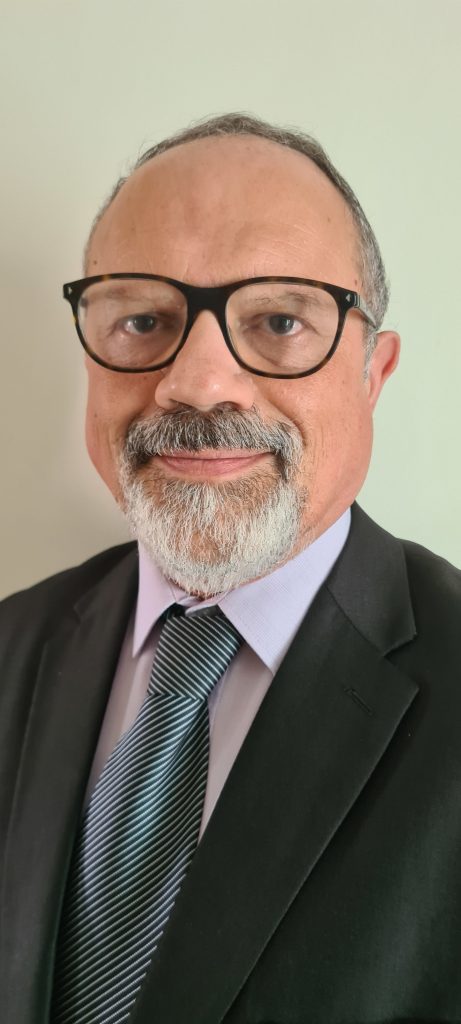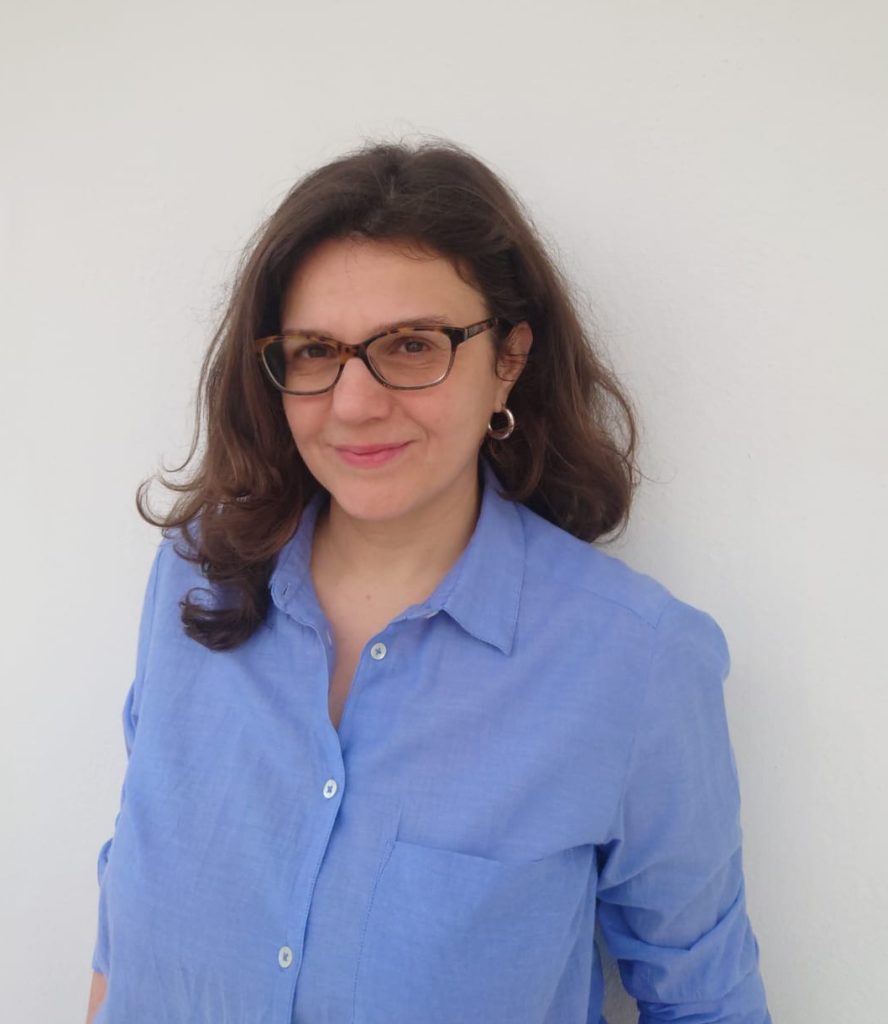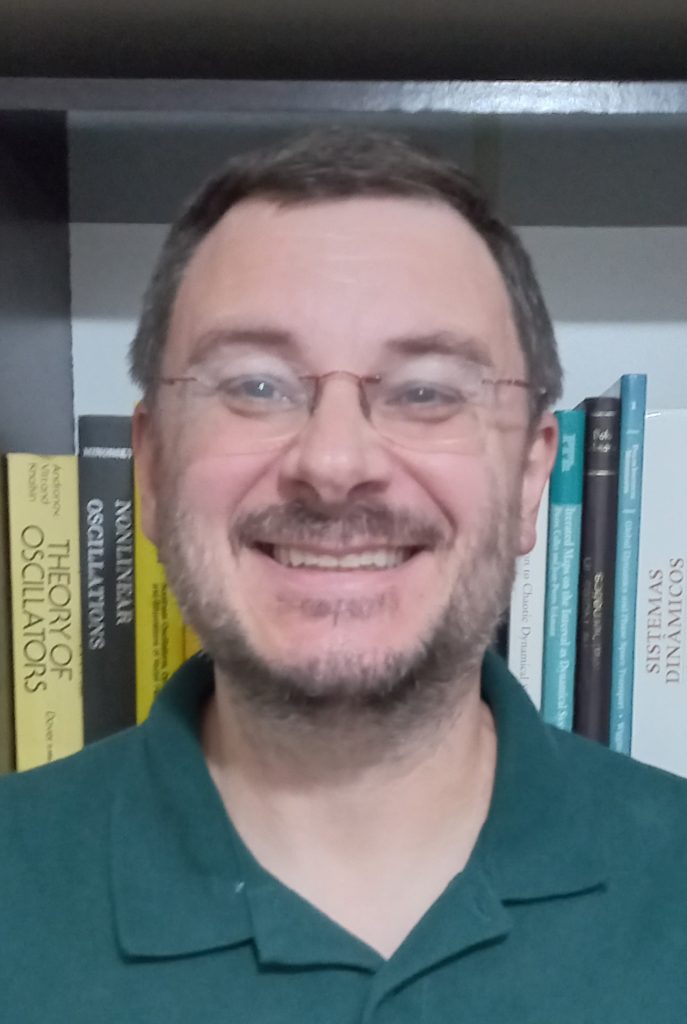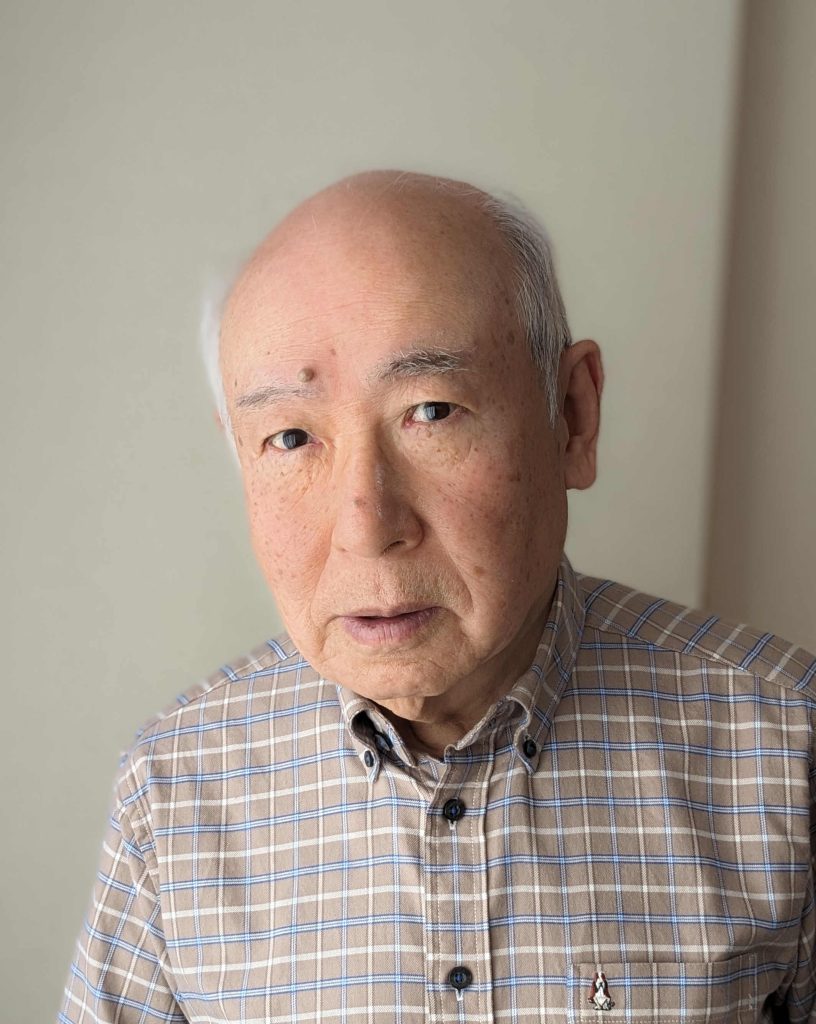Plenary Talks
Lagrange Award Lectures
Exploring the Dynamics of Large Systems of Coupled Oscillators
Abstract: It is argued that the method of dynamical reduction, such as the center-manifold reduction and phase reduction is crucial for deeper understanding of the dynamics of large systems of coupled oscillators. This fact will be partly demonstrated with several of my works in this field. They include the discovery of a simplest partial differential equation (Kuramoto-Sivashinsky equation), a solvable mathematical model exhibiting synchronization phase transition (Kuramoto model), and coexistence of coherence and incoherence in no-locally coupled oscillators (chimera states). All these findings are the result of phase reduction of the complex Ginzburg-Landau equation (or its variants) which itself is a result of the center-manifold reduction of reaction-diffusion equations. How the above works influenced the subsequent advances of the field of coupled oscillators and synchronization will be briefly overviewed.
Bio: Yoshiki Kuramoto received his Master’s degree in 1966, and Doctor of Science in 1970, both from Kyoto University. He served as an assistant professor at Kyushu University until 1976 and went on to be an associate professor at Kyoto University until 1981, before becoming a full professor until 2004. After retiring from Kyoto University, he held position such as specially appointed professor of Hokkaido University, visiting professor of Kyoto University, and deputy director at the International Institute for Advanced Studies. His major awards include the Asahi Prize in 2005 and Juergen Moser Lecture Prize in 2023

M. Lakshmanan
Department of Nonlinear Dynamics, School of Physics, Bharathidasan University, India
Simple and Complex Nonlinear Dynamical Systems: Integrability, Chaos and Collective Dynamical States
Abstract: In my talk, I will present some of the salient features of collective dynamical states in integrable and nonintegrable as well as chaotic nonlinear systems and networks as generalizations of FPU anharmonic lattice. Notions of solitons and soliton molecules of different types, rogue waves, bullets, vortices, bifurcations & chaos, desynchronization, synchronization, different types of chimeras and so on will be introduced with specific examples. In particular I will explore the properties of coupled nonlinear Schroedinger (NLS) family of equations in (1+1) dimensions and NLS equation in higher spatial-dimensions to discuss the integrability and nonintegrability properties. Then considering basic nonintegrable nonlinear oscillators occurring in various physical contexts, I will briefly consider the collective dynamical states in their specific coupled versions, especially with reference to Stuart-Landau and Kuramoto oscillators. I will also briefly consider the basic brain dynamics in terms of coupled nonlinear oscillators and their connection to artificial neural networks. Finally the dynamics associated with coupled nonlinear electronic circuits of Murali-Lakshmanan-Chua type and spin torque nano oscillators will be briefly considered.
Bio: I received my Ph.D. degree under the mentorship of Prof. P. M. Mathews from the Department of Theoretical Physics, University of Madras, India in 1974. After spending the period 1975-78 mostly abroad, first as a short term visitor at ICTP, Trieste, Italy and at the University of Utrecht, Holland and then as a Alexander von Humboldt Foundation Fellow at the University of Tuebingen in Germany, and as a Eindhoven University Postdoctoral Fellow in Netherlands, I joined as a Reader in Physics at the University of Madras Autonomous Post-Graduate Centre, Tiruchirappalli, India in March 1978, which became Bharathidasan University in 1982. I also visited the University of Manchester Institute of Science & Technology under a Royal Society Nufffield Foundation Bursary during 1979-80 and University of Uppsala as a Swedish Research Council Visitor in 1981, and as a Japan Society for Promotion of Science Fellow at the University of Kyoto during 1984-85. I was promoted as Professor of Physics, Bharathidasan University in 1984 and later served as the Head, School of Physics (1994-2006) and Head, Centre for Nonlinear Dynamics during 1992-2006. During 2006-2017 I was a DAE/DST- Raja Ramanna Fellow and during 2017-2022, I was a DST-SERB Distinguished Fellow and from 2022 onwards I am working as a DST-ANRF National Science Chair Professor. I have mentored more than 35 Ph.D. scholars (and two are working presently) and about 25 Postdoctoral scholars while four are working at present. Published more than 450 research papers and 10 books with a citation index: Google scholar – above 19800, with a h-index of 71. I had been a short term visitor at a number of institutions around the world including University of Hannover, Potsdam Climate Impact Institute, Osaka City University, University of Tokyo (Kashiwa Campus), Los Alamos National Laboratory, etc. I have received some of the highest scientific awards in India, including the S.S. Bhatnagar Prize in Physical Sciences (1989), UGC Hari Om Trust Meghnad Saha Award (1990) in Theoretical Physics, Indian Science Congress Distinguished Scientist Award (2004), Goyal Prize in Physics (2005), R.D. Birla Award (2014) of Indian Physics Association, Government of Tamilnadu A.P.J. Abdul Kalam Award (2021), and Government of India Vigyan Shri Award (2024).

Boris Malomed
Dept. of Physical Electronics, School of Electrical Engineering Faculty of Engineering, Tel Aviv University
Thursday (07/08): 09:00 AM – 09:50AM
Multidimensional Solitons
Abstract: It is commonly known that the interplay of linear and nonlinear effects
gives rise to solitons, i.e., self-trapped localized structures, in a wide range of physical settings, including optics, Bose-Einstein condensates (BECs), hydrodynamics, plasmas, condensed-matter physics, etc. Nowadays, solitons are considered as an interdisciplinary class of modes, which feature diverse internal structures. While most experimental realizations and theoretical models of solitons have been elaborated in one-dimensional (1D) settings, a challenging issue is prediction of stable solitons in 2D and 3D media. In particular, multidimensional solitons may carry an intrinsic topological structure in the form of vorticity. In addition to the “simple” vortex solitons, fascinating objects featuring complex structures, such as hopfions, i.e., vortex rings with internal twist, have been predicted too.
A fundamental problem is the propensity of multidimensional solitons
to be unstable (naturally, solitons with a more sophisticated structure, such as vortex solitons, are more vulnerable to instabilities). Recently, novel perspectives for the creation of stable 2D and 3D solitons were brought to the attention of researchers in optics and BEC. The present talk aims to provide an overview of the main results and ongoing developments in this vast field. An essential conclusion is the benefit offered by the exchange of concepts between different areas, such as optics, BEC, and hydrodynamics.
Bio: I was born in Minsk (Belarus). I had received MS in physics from the Belorussian State University (Minsk) in 1977, PhD in theoretical physics from the Moscow Institute of Physics and Technology in 1981, and the Doctor of Sciences degree (habilitation) in theoretical physics from the N. N. Bogoliubov Institute for Theoretical Physics, Ukrainian Academy of Sciences (Kiev) in 1989. Till 1991, I was a senior researcher at the Institute for Oceanology of the USSR Academy of Sciences (Moscow). Since 1991, I was an Associate Professor, and since 1998 a Full Professor at the Tel Aviv University. Since 2015, I am a holder of a personal research chair “Optical solitons” funded by the Tel Aviv University. I have published 1,200+ papers and four books. The total number of citations to my publications exceeds 56,800. My h-index is 90 (Web of Science) / 93 (Scopus)/ 108 (Google Scholar). I am an editor of three major international journals: Physics Letters A, Chaos, Solitons & Fractals, and Scientific Reports, and an Editorial Board member of Journal of Optics, Symmetry, Photonics, Optics Communications, Chaos, and PLOS ONE. I have been an advisor to 31 MS students, 14 PhD students, and 11 postdocs. I am a Senior Member of the Optical Society of America (recently renamed to Optica), and a Foreign Member of the Serbian Academy of Nonlinear Sciences.
Zaslavsky Award Lectures

Igor Aronson
Huck Chair Professor of Biomedical Engineering, Chemistry and Mathematics, Pennsylvania State University, USA
Tuesday (05/08): 09:00AM – 09:50AM
Confined bacterial suspensions
Abstract: Active turbulence, or chaotic self-organized collective motion, is often observed in concentrated suspensions of motile bacteria and other systems of self-propelled interacting agents. Previous experiments have shown that the complex spatiotemporal vortex structures emerging in motile bacterial suspensions are susceptible to weak geometrical constraints. By a combination of continuum theory and experiments, we have shown how artificial obstacles guide the flow profile and reorganize topological defects, which enables the design of bacterial vortex lattices with tunable properties. In more recent studies, we observed the emergence of spatiotemporal chaos in a bacterial suspension confined in a cylindrical well. As the well radius increases, we observed a bifurcation sequence from a steady-state vortex to periodically reversing vortices, four pulsating vortices, and, finally, to spatiotemporal chaos (active turbulence). The results of experiments are rationalized by the analysis of the continuum model for bacterial suspensions based on the complex Swift-Hohenberg equations. Furthermore, the bifurcation sequence is explained by reduction to amplitude equations for the three lowest azimuthal modes. Equations of motion are then reconstructed from experimental data. The results indicate that the vortex reversal precedes the onset of spatiotemporal chaos in confined active systems.
Bio: Dr. Aronson made multiple contributions to nonlinear science, from pattern formation in nonlinear systems described by the complex Ginzburg-Landau equation, to continuum description of granular flows, suspensions of motile microorganisms, and general aspects of active matter. Aronson’s current research interests include computational modeling of collective cell migration, experimental and theoretical studies of bacterial motility in anisotropic environments, and the dynamics of synthetic nanomotors. Aronson established a multi-faceted approach to active bio-inspired materials, where experiments, theory, and simulations were integrated within one interdisciplinary research group. Aronson has about 300 peer-reviewed publications and 10 patents. His work has been cited over 21,000 times. He has supervised over 15 graduate students and 10 postdoctoral fellows.
Selected Honors
1982 The Gold Medal, All-Union (USSR) competition of M.Sc. theses, organized by the USSR Higher, Education Ministry.
1991 The Alexander-von-Humboldt Research Fellowship, Germany
1992 The Wolfson Research Fellowship, Israel
1993 The Guastello Research Fellowship, Israel
2002 Fellow of American Physical Society, APS, USA
2005 Henry Poincare Invited Professor, Paris, France
2006, 2013 Ville de Paris invited professorship, ESPCI, France
2010 CNRS Scholar, ESPCI, Paris, France
2014 Board of Governors Distinguished Performance Award, Argonne Univ of Chicago Ltd, IL
2019 The Alexander-von-Humboldt Research Award, Germany

Iberê L. Caldas
Department of Applied Physics, Institute of Physics, University of São Paulo, São Paulo, Brazil
Wednesday (06/08): 09:00AM – 09:50AM
Shearless Invariant Curves in Hamiltonian Phase Space
Abstract: Usually, conservative maps satisfy the twist condition; i.e., in an angle-action portrait, as we vary the action, the iterated points will lie on concentric circles with different rotation numbers. However, for a system with nonmonotonic equilibrium, the rotation number profile may have extreme points without shear, violating the twist condition. This work deals with shearless curves, special invariants with extreme rotation numbers. These shearless invariant curves are solutions for nontwist Hamiltonian systems and act like barriers in phase space restricting the chaotic transport. Accordingly, we found examples of such curves inside plasmas with nonmonotonic equilibrium profiles confined in tokamaks. Complementary, we apply Slater’s theorem to develop a qualitative and quantitative numerical approach to determine the breakup of invariant curves in the phase space of area-preserving maps. Meanwhile, we reported evidence of such transport barriers in plasmas confined in the tokamak TCABR and the Texas Helimak. Furthermore, we also identified bifurcations that created secondary shearless curves [Meiss] inside islands of stability in the phase space of some conservative twist and nontwist maps. After that, we found bifurcations that give rise to multiple shearless curves in the plasma confined in tokamaks and in the two modes nontwist standard map. Recently, for systems with isochronous perturbations, we found examples of maps and flows with bifurcations creating these secondary shearless curves. We find that such curves can emerge in pairs or alone, depending on the driven bifurcation. Our results indicate that a local onset of shearless curves is a recurrent phenomenon in conservative twist and nontwist systems.
Bio: Iberê L. Caldas is a Senior Professor at the University of São Paulo, Brazil. He was a guest scientist at the Max-Planck Institute for Plasma Physics (Garching, Germany). His research and published papers are mainly on the control of turbulence and transport in plasma physics, and chaos theory applied to various Hamiltonian and dissipative systems. Presently, he is collaborating with scientists from the following Brazilian institutions: the State University of Ponta Grossa, Federal University of Paraná, Federal University of Rio Grande do Sul, São Paulo State University, Federal University of São João Del Rey, Brazilian Center for Research in Physics, and Federal Institutes of Education, Science, and Technology of São Paulo and of South of Minas Gerais. He also collaborates with scientists from The Unversity of Texas, Aix-Marseille University, Humboldt University Berlin, University of Aberdeen, and NOVA University Lisbon. He has supervised 43 PhD and 30 MSc theses and 35 postdocs. He is one of the authors of the textbook Physics for Biological Sciences (1986, published by Harbra, São Paulo) and is a member of the Academy of Science of the São Paulo State.

Rajarshi Roy
Institute for Physical Science and Technology Department of Physics and Institute for Research in Electronics and Applied Physics University of Maryland, College Park
Monday (04/08): 09:00AM – 09:50AM
Optoelectronic oscillators in the single photon regime
Abstract: Optoelectronic oscillators with time-delayed feedback are of interest for generating precise frequencies, waveforms with chaotic dynamics and for exploring the dynamics of networks of coupled nonlinear oscillators. We will describe experiments with an optoelectronic oscillator where single photons are detected and one can watch the progression from shot noise to the birth of a chaotic attractor. The counterintuitive idea that lots of oscillators may synchronize when a small number won’t is illustrated with examples that range from atoms with different oscillation frequencies to laser beam combination. Synchronization of remotely located oscillators with entangled photons is a challenging problem with weak light sources. Since 2025 is the UNESCO International Year of the Quantum, we conclude with a question: how much information can be conveyed by a single photon?
Bio: Rajarshi Roy studied Physics at St. Stephen’s College in Delhi, India and received a PhD in Physics from the University of Rochester in 1981. His advisor was Leonard Mandel, from whom he learned to explore light-matter interactions with table-top experiments. The coexistence of randomness and determinism, and of coherence and chaos, has been his abiding interest for over four decades. He has advised over three dozen doctoral students at Georgia Tech (1982 – 1999) and the University of Maryland (1999 – present), and collaborated with engineers, mathematicians and scientists from around the world on nonlinear dynamics and statistical physics. He has served as chair of the School of Physics at Georgia Tech (1996 – 1999) and Director of the Institute for Physical Science and Technology (2003 – 2014) at the University of Maryland. He is a professor in the Department of Physics and his laboratory is located in the Institute for Research in Electronics and Applied Physics. He was a visitor at Bell Labs in Murray Hill in 1987, a visitor at NIH in 2009 and 2014 and Benedict Distinguished Visiting Professor at Carleton College in 2020. He is a fellow of Optica and the American Physical Society.
Hsu Award Lectures

Keqin Gu
Distinguished Research Professor Emeritus of the Department of Mechanical and Mechatronics Engineering, Southern Illinois University Edwardsville
Monday (04/08): 04:45PM – 05:35PM
Coupled differential-difference equations: Generality, stability region, sensitivity to small delays, and computational efficiency
Abstract: Coupled differential-difference equations is a natural description of practical systems, and is a unified formulation for time-delays of both retarded and neutral type. This presentation provides both a frequency domain analysis and Lyapunov-Krasovskii functional based stability analysis. In the frequency domain analysis, the global geometric structure is described, which extends the tau-decomposition proposed by C.S. Hsu. In the Lyapunov-Krasivskii functional based method, it described the discretization, decomposition and reduction of problem size that permits an efficient numerical implementation of stability analysis. It also presents a unified interpretation of various stability phenomena such as sensitivity of Smith predictor to arbitrary small delay mismatch, the need for well-posedness due to the possibility of arbitrarily small delays, practical stability problem, and instability caused by approximating distributed delay feedback control by discreted delays.
Bio: Dr. Keqin Gu is a Distinguished Research Professor Emeritus of the Department of Mechanical and Mechatronics Engineering, Southern Illinois University Edwardsville. He co-developed Interpreted Cell Mapping method for nonlinear dynamical systems that permits a continuous state space point of view, which supplements the cell-to-cell mapping developed by C.S. Hsu. He developed the discretized Lyapunov functional method, which was the first numerically implementable method that can asymptotically approach the analytical stability limit for time-delay systems. He also developed a numerically implementable stability conditions for coupled differential-difference equations that include time-delay systems of retarded and neutral type as special cases, and drastically reduced the computational needs for most practical time-delay systems and provided a unified interpretation of sudden change of stability due to arbitrarily small delay variation in various control setting. He also described the global geometric structure of stability crossing set for systems with two or three delays, which is an extension of the tau-decomposition method for the single delay case proposed by C.S. Hsu.
Dr. Gu served as an associate editor or a member of editorial board in a number of premium technical journals in control systems such as IEEE Transactions on Automatic Control, Automatica, and Systems and Control Letters, as well as program committee member of major control conferences in the control systems area such as Conference on Decision and Control, and American Control Conferences. He also co-organized a number of workshops on time-delay systems. He received IFAC Delay Systems Lifetime Achievement Award in 2025.

G. Ambika
Indian Institute of Science Education and Research, Thiruvananthapuram, India
Thursday (07/08): 10:45AM – 11:35AM
Control of dynamics and transitions on multiplex networks
Abstract: The complexity in the dynamics of many real world systems with differing dynamics or types of interactions can be understood by modelling them on multiplex networks. In such systems, the nonlinearity in dynamics, heterogeneity in time scales and complex nature of interactions can lead to many interesting spatiotemporal patterns.
In this talk I will present such emergent dynamical patterns observed in dynamical systems connected on a multiplex framework under varying time scales and interactions. Some of the interesting results are the selection of dynamical patterns across the layers, emergence of amplitude chimeras and chimera death, explosive synchronization and tipping, suppression and recovery of oscillations and relay synchronization with amplification of oscillations.
I will discuss how the heterogeneity in coupling patterns and dynamical time scales can be used to control the dynamics to desired states. This has relevance in understanding and controlling the dynamical states observed in real world systems where heterogeneity in interactions and mismatch in timescales are prevalent, like neuronal systems, power grids, and social networks.
Bio: Prof G. Ambika is currently Honorary Professor, at Indian Institute of Science Education and Research (IISER), Thiruvananthapuram, India. She is Visiting Associate, Inter University Center for Astronomy and Astrophysics (IUCAA), Pune. Currently Prof Ambika is also serving as Academic Consultant in India for University of Melbourne. Earlier she has served as Professor of Physics and Dean Academics at IISER Pune and IISER Tirupati. Her research interests are in the area of Complex systems and Nonlinear Dynamics, specifically complexity measures from data, data driven dynamics and emergent dynamics on complex networks. Her significant and novel contributions include a wide range of topics, such as Frequency chimera due to multiple time scales, Chimera states in multiplex networks, Synapse loss and Alzheimer’s disease, Multiplex recurrence networks from multichannel ECG data, Early Warning Signals for the dimming of Betelgeuse, classification of close binary stars, variable-delay coupling scheme for delay or anticipatory synchronization, environmental coupling in complex systems, Random Interacting Network (RAIN) model for transport systems, and new measures based on heterogeneity, entropy and weighted recurrence networks for studying recurrence patterns in data.

Ricardo Luiz Viana
Department of Physics, Federal University of Paraná, Curitiba, Paraná, Brazil
Wednesday (06/08): 10:45AM – 11:35AM
Obstructions to shadowability of chaotic dynamical systems: the role of unstable dimension variability
Abstract: The extreme sensitivity to initial conditions displayed by chaotic dynamical systems often leads to a puzzling question: to what extent can we trust should computer-generated chaotic trajectories? Are these trajectories “real”, in the sense that they closely follow actual chaotic orbits of the system? The answers to these questions are within the realm of shadowability theory. It has been long known that chaotic orbits from hyperbolic systems are shadowable for an infinite time. However, most dynamical systems of physical, biological and technological interest are non-hyperbolic, so the lack of shadowability seems to haunt the credibility of numerical simulations of chaotic processes used by scientists and engineers in their activities. I will discuss the so-called unstable dimension variability, which is a major obstruction to shadowability of chaotic orbits of non-hyperbolic systems. In this case, unstable periodic orbits embedded in a chaotic invariant set, such as a chaotic attractor, have different numbers of unstable directions, what violates the continuous splitting between stable and unstable directions along a trajectory, which is a fundamental property of hyperbolic sets. In chaotic systems displaying unstable dimension variability, the shadowing time can be so small that computer-generated orbits may not be meaningful if taken individually, although valid conclusions can be drawn from a statistical treatment of assemblies of such trajectories, like average values and fluctuations. I will present some results we have recently obtained concerning the evaluation of statistical properties derived from dynamical systems exhibiting unstable dimension variability.
Bio: I was born in Curitiba, the capital city of the state of Paraná, in the southern part of Brazil, where I completed my undergraduate studies, obtaining a Bachelor’s degree in Physics. I continued my graduate studies at the University of São Paulo, where I obtained a PhD degree in Physics in 1991, with a thesis on nonlinear dynamical aspects of Plasma Physics problems. In 1997, I was a Visiting Scholar at the Institute for Physical Science and Technology of the University of Maryland at College Park, under the supervision of James A. Yorke and Celso Grebogi. In 1989 I returned to Curitiba and joined the Department of Physics of the Federal University of Paraná as an Assistent Professor. Since 1994, I am a Full Professor in the Department of Physics and head of the Plasma Physics and Nonlinear Dynamics Research Group. My main research topics are in the field of Applied Nonlinear Dynamics and Chaos Theory, specially in problems of interest in Plasma Physics. I have published, up to now, almost 288 papers, with more than 4300 citations (my current H-index is 33). In the same time interval I have supervised 20 MSc dissertations, 19 Phd theses and 10 post-doctoral researchers. At the present moment, I have 2 MSc and 2 PhD students. During the period 2023-2024 I was a visiting Professor at the Institute of Physics of Universidade de São Paulo, my alma mater. I am member of the Editorial Board of the following journals: Nonlinear Theory and Its Applications (IEICE, Japan), and International Journal of Applied Nonlinear Dynamics (L&H), and a member of the Brazilian Physical Society, where I have chaired the Plasma Physics committee.
Afraimovich Award Lectures

Johanne Hizanidis
Institute of Electronic Structure and Laser, FORTH, Greece.
Tuesday (05/08): 10:45AM – 11:35AM
Superconducting oscillators: From collective dynamics to neuromorphic computing
Abstract: In ensembles of coupled oscillators, the synergy between topological features and the underlying dynamics may lead to interesting self-organized phenomena. In the first part of my talk, I will present a system that is capable of exhibiting such complex dynamics: a SQUID (superconducting quantum-interference device) metamaterial, i. e. an artificially structured medium of periodically arranged, weakly coupled SQUIDs, which shows extraordinary electromagnetic properties and tunability. From a dynamical point of view, the single SQUID is a highly nonlinear system exhibiting extreme multistablity and chaos. I will talk about the emergent collective behavior in SQUID metamaterials, in particular spatiotemporal pattern formation and chimera states. The bulding block of superconducting devices is the Josephson junction (JJ), which by nature is a neuromorphic hardware device capable of mimicking fundamental neuron-like behavior. When combined in circuits, coupled JJs can emulate more sophisticated properties found in biological neurons. From a technological point of view, JJ-based neuromorphic systems are particularly appealing due to their capacity to operate in great speeds and with low energy. In the second part of my talk I will present recent work on such JJ-based systems and discuss the mechanisms underlying the exhibited dynamical properties relevant for neurocomputation.
Bio: Dr. Johanne Hizanidis studied Physics at the University of Athens, Greece and received her PhD in 2008 from the Institute of Theoretical Physics, at the Technical Univeristy of Berlin in Germany. Currently, she is a Senior Researcher at the Institute of Electronic Structure and Laser of the Foundation for Research and Technology–Hellas and is also affiliated with the Physics Department of the University of Crete. Her research interests lie in the application of mathematical and computational tools from the theory of nonlinear dynamical systems for the study of complex problems of condensed-matter physics. More specifically, she has explored the dynamics of semiconductor nanostructures with focus on spatio-temporal pattern formation, bifurcation analysis, time-deyaled feedback control methods and noise-induced constructive effects. In addition, she has carried out extensive work on synchronization phenomena and, in particular, chimera states in complex networks of biological neurons. In recent years, she has focused on the study of the collective behavior of superconducting metamaterials and the nonlinear dynamics of Josephson jucntion-based devices. This work is partly conducted in collaboration with experimental partners in the United States. Lately she is particularly interested in utilizing the nonlinear properties of such systems for fast and energy-efficient neuromorphic computing applications.

Cristian Bonatto
Federal University of Rio Grande do Sul (UFRGS), Brazil
Monday (04/08): 10:45AM – 11:35AM
Chaotic and Hyperchaotic Dynamics in Nonlinear Systems: Structure, Statistics, and Extreme Events
Abstract: In my talk, I will present an overview of the structure of the parameter space in a variety of nonlinear dynamical systems. Special emphasis will be placed on the organization of chaotic and hyperchaotic regions in low-dimensional systems, revealing a range of phenomena that arise from the interplay between order and disorder. Associated nonlinear behaviors such as synchronization and excitability will be discussed in detail, including the identification of novel dynamical scenarios. I will also explore the statistical properties of chaotic and hyperchaotic solutions in several low-dimensional physical systems, highlighting qualitatively distinct types of dynamical behavior. Particular attention will be given to the emergence of extreme events in low-dimensional systems, along with a discussion of the underlying mechanisms and possibilities for predicting such events.
Applications will be illustrated in the context of optics, with systems including conventional lasers with injection and feedback, quantum well and quantum dot semiconductor lasers, vertical cavity surface-emitting lasers (VCSELs), spin-VCSELs, and dual-mode lasers. In particular, a novel dynamical scenario will be presented in light dynamics within ring cavities containing a Kerr medium.
Bio: Dr. Cristian Bonatto is an Associate Professor at the Federal University of Rio Grande do Sul (UFRGS), Brazil, since 2014. He earned his Bachelor’s degree in Physics from UFRGS in 2003, followed by a PhD in Physics at the same institution in 2008. Dr. Bonatto completed multiple postdoctoral positions, starting at the Tyndall National Institute in Ireland (2008–2010), funded by Science Foundation Ireland (SFI), then at the Universitat Politècnica de Catalunya, Spain (2011), funded by UPC. He returned to UFRGS for a postdoctoral role in 2012–2013 before transitioning to a faculty position as an adjunct professor at the Federal University of Pelotas (UFPEL) in 2013–2014.
His research is focused on nonlinear dynamics and complex systems, particularly in the discovery of novel phenomena in chaotic and dynamical systems.
Main Contributions:
* Discovery of shrimp-shaped domains in continuous-time dynamical systems.
* Discovery of accumulation horizons for shrimp-shaped domains.
* Discovery of periodicity hubs in dynamical systems.
* Discovery of deterministic extreme events in low-dimensional chaotic systems.
*Discovery of hyperchaotic dynamics for light-polarization
